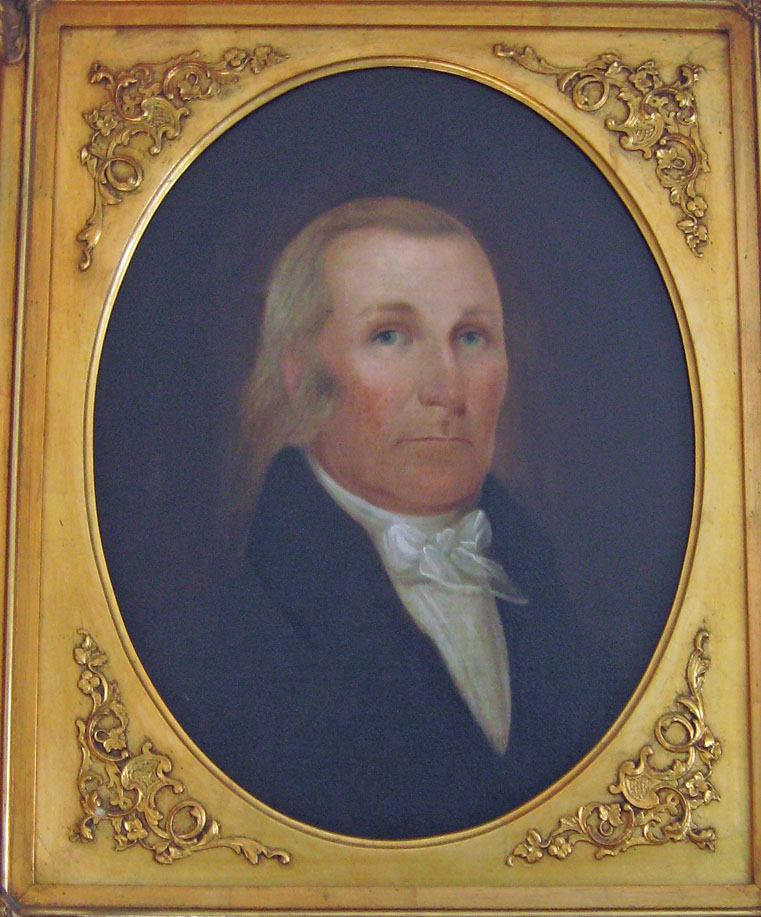The 150-foot column known as the Prison Ship Martyrs Monument in Brooklyn, New York was built in memory of the 11,500 men, women and children who died aboard British prison ships during the American Revolutionary War. My five times great-grandfather, Timothy Stanley Jr., was one of them.
Timothy Stanley Jr. was born in 1730 in Hartford, Connecticut, a member of the fourth generation of the extended Stanley family in America. The original immigrants were three brothers, John, Thomas and Timothy Stanley, who came from Tenterden, Kent, England in 1634. The Timothy who is the subject of this article descended from the youngest of the immigrants, also named Timothy. Timothy’s parents, Timothy Stanley and Mary Mygatt, moved from Hartford to Harwinton, CT, where the future soldier married Mary Hopkins in 1754. The young couple then settled in nearby Litchfield. An ad that appeared in the Connecticut Courant in 1776 suggested he had his own small business. It read, “Clothier and oil-mill screws cut in the neatest manner, by a machine by the subscribers at Litchfield, Abel Darling, Timothy Stanley.”
Timothy and Mary had nine children. I’m descended from their fourth child, Pamela, who was born in 1760. Timothy’s wife, Mary, died around 1770.
When the Revolutionary War broke out, Timothy signed up with Captain Bezaleel Beebe’s Company in Litchfield. In November 1776, thirty-six men from Beebe’s company were sent to Fort Washington, at the north end of Manhattan Island, to help defend the fort. The British captured it and took the soldiers prisoner. Timothy was put aboard a prison ship anchored in the East River, near Brooklyn. He died on board on Dec. 26, 1776.
The story of the prison ships is not well known. During the revolution, the British took many prisoners, including foreign sailors, soldiers captured in battle and private citizens accused of supporting the revolution. By the end of 1776, they had imprisoned some 5000 individuals. They did not have enough jails to cope with all these prisoners, so they converted several former transport vessels into prison ships.
The conditions on board were terrible: the vessels were overcrowded, there wasn’t enough food, the water was contaminated and many of the prisoners had infectious diseases. More than twice as many people died aboard these prison ships than in battle. The bodies of the dead were buried in shallow graves along the marshy shoreline. After the revolution, the British commander who had been in charge of the prison ships was hanged.
In 1808, some of the prisoners’ remains were buried in a tomb near the Brooklyn Navy Yard. Seventy years later, they were moved to a large brick vault in Washington Park, later renamed Fort Greene Park. President Taft inaugurated the classic column built as a memorial to the prison ship victims in 1908, but over the following century, the monument suffered from neglect and vandalism. It was restored in a $5-million project that was unveiled in 2008.
Research Remarks. I first read of Timothy Stanley’s fate in Israel P. Warren’s classic 1887 publication The Stanley Families of America as Descended from John, Timothy and Thomas Stanley of Hartford, CT 1636 (https://openlibrary.org/books/OL23666712M/The_Stanley_families_of_America). I found corroboration on the genealogical database of the Daughters of the American Revolution website. (http://services.dar.org/public/dar_research/search/?Tab_ID=0). I am not a member of the DAR, but several other descendants are, or were, so I was able to access a summary of Timothy’s service record on the DAR’s database for a $10 fee. I don’t know how accurately the British identified the prisoners and recorded their deaths, but that date, December 26, 1776, sounds pretty final to me.
Also in the course of researching this piece, I came across an article that described how an unscrupulous paid researcher invented information about the births of the immigrant Stanley brothers in England. (Mahler, Leslie. “Re-Examining the English Origin of the Stanley Brothers of Hartford, Connecticut. A Case of Invented Records.” The American Genealogist 80 (2005): 218. http://www.americanancestors.org/PageDetail.aspx?recordId=235863582 [accessed July 29, 2013]). The original flawed publication appeared in 1926 and the error was not noticed until The American Genealogist article appeared in 2005. Considering the size of the Stanley family tree today, I suspect a great many family histories still have to be corrected.

